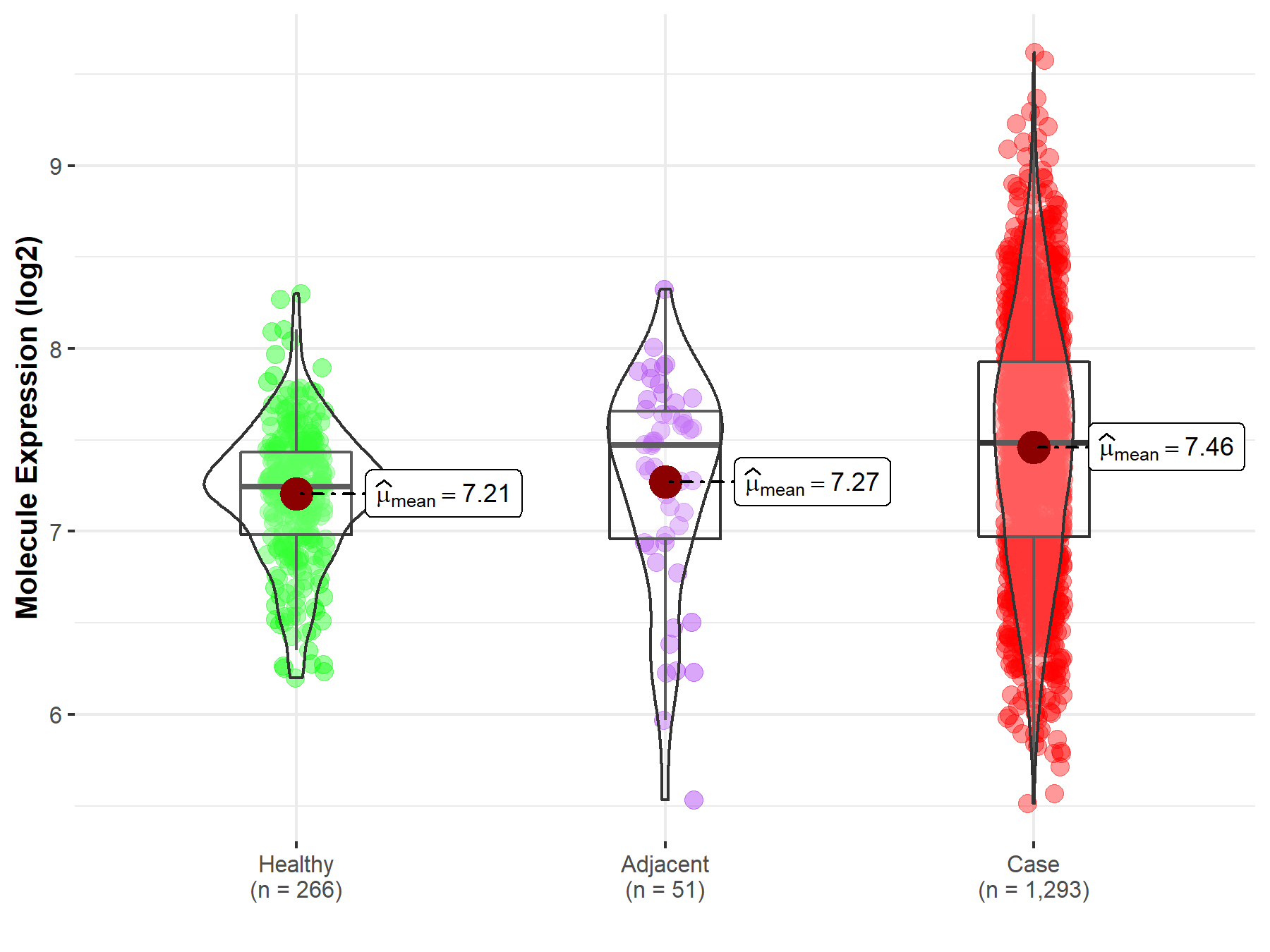Molecule Information
General Information of the Molecule (ID: Mol00524)
| Name |
Nuclear receptor coactivator 3 (NCOA3)
,Homo sapiens
|
||||
|---|---|---|---|---|---|
| Synonyms |
NCoA-3; ACTR; Amplified in breast cancer 1 protein; AIB-1; CBP-interacting protein; pCIP; Class E basic helix-loop-helix protein 42; bHLHe42; Receptor-associated coactivator 3; RAC-3; Steroid receptor coactivator protein 3; SRC-3; Thyroid hormone receptor activator molecule 1; TRAM-1; AIB1; BHLHE42; RAC3; TRAM1
Click to Show/Hide
|
||||
| Molecule Type |
Protein
|
||||
| Gene Name |
NCOA3
|
||||
| Gene ID | |||||
| Location |
chr20:47501887-47656877[+]
|
||||
| Sequence |
MSGLGENLDPLASDSRKRKLPCDTPGQGLTCSGEKRRREQESKYIEELAELISANLSDID
NFNVKPDKCAILKETVRQIRQIKEQGKTISNDDDVQKADVSSTGQGVIDKDSLGPLLLQA LDGFLFVVNRDGNIVFVSENVTQYLQYKQEDLVNTSVYNILHEEDRKDFLKNLPKSTVNG VSWTNETQRQKSHTFNCRMLMKTPHDILEDINASPEMRQRYETMQCFALSQPRAMMEEGE DLQSCMICVARRITTGERTFPSNPESFITRHDLSGKVVNIDTNSLRSSMRPGFEDIIRRC IQRFFSLNDGQSWSQKRHYQEAYLNGHAETPVYRFSLADGTIVTAQTKSKLFRNPVTNDR HGFVSTHFLQREQNGYRPNPNPVGQGIRPPMAGCNSSVGGMSMSPNQGLQMPSSRAYGLA DPSTTGQMSGARYGGSSNIASLTPGPGMQSPSSYQNNNYGLNMSSPPHGSPGLAPNQQNI MISPRNRGSPKIASHQFSPVAGVHSPMASSGNTGNHSFSSSSLSALQAISEGVGTSLLST LSSPGPKLDNSPNMNITQPSKVSNQDSKSPLGFYCDQNPVESSMCQSNSRDHLSDKESKE SSVEGAENQRGPLESKGHKKLLQLLTCSSDDRGHSSLTNSPLDSSCKESSVSVTSPSGVS SSTSGGVSSTSNMHGSLLQEKHRILHKLLQNGNSPAEVAKITAEATGKDTSSITSCGDGN VVKQEQLSPKKKENNALLRYLLDRDDPSDALSKELQPQVEGVDNKMSQCTSSTIPSSSQE KDPKIKTETSEEGSGDLDNLDAILGDLTSSDFYNNSISSNGSHLGTKQQVFQGTNSLGLK SSQSVQSIRPPYNRAVSLDSPVSVGSSPPVKNISAFPMLPKQPMLGGNPRMMDSQENYGS SMGGPNRNVTVTQTPSSGDWGLPNSKAGRMEPMNSNSMGRPGGDYNTSLPRPALGGSIPT LPLRSNSIPGARPVLQQQQQMLQMRPGEIPMGMGANPYGQAAASNQLGSWPDGMLSMEQV SHGTQNRPLLRNSLDDLVGPPSNLEGQSDERALLDQLHTLLSNTDATGLEEIDRALGIPE LVNQGQALEPKQDAFQGQEAAVMMDQKAGLYGQTYPAQGPPMQGGFHLQGQSPSFNSMMN QMNQQGNFPLQGMHPRANIMRPRTNTPKQLRMQLQQRLQGQQFLNQSRQALELKMENPTA GGAAVMRPMMQPQVSSQQGFLNAQMVAQRSRELLSHHFRQQRVAMMMQQQQQQQQQQQQQ QQQQQQQQQQQQQQQQTQAFSPPPNVTASPSMDGLLAGPTMPQAPPQQFPYQPNYGMGQQ PDPAFGRVSSPPNAMMSSRMGPSQNPMMQHPQAASIYQSSEMKGWPSGNLARNSSFSQQQ FAHQGNPAVYSMVHMNGSSGHMGQMNMNPMPMSGMPMGPDQKYC Click to Show/Hide
|
||||
| Function |
Nuclear receptor coactivator that directly binds nuclear receptors and stimulates the transcriptional activities in a hormone-dependent fashion. Plays a central role in creating a multisubunit coactivator complex, which probably acts via remodeling of chromatin. Involved in the coactivation of different nuclear receptors, such as for steroids (GR and ER), retinoids (RARs and RXRs), thyroid hormone (TRs), vitamin D3 (VDR) and prostanoids (PPARs). Displays histone acetyltransferase activity. Also involved in the coactivation of the NF-kappa-B pathway via its interaction with the NFKB1 subunit.
Click to Show/Hide
|
||||
| Uniprot ID | |||||
| Ensembl ID | |||||
| HGNC ID | |||||
| Click to Show/Hide the Complete Species Lineage | |||||
Type(s) of Resistant Mechanism of This Molecule
Drug Resistance Data Categorized by Drug
Approved Drug(s)
1 drug(s) in total
| Drug Resistance Data Categorized by Their Corresponding Mechanisms | ||||
|
|
||||
| Disease Class: Breast cancer | [1] | |||
| Resistant Disease | Breast cancer [ICD-11: 2C60.3] | |||
| Resistant Drug | Paclitaxel | |||
| Molecule Alteration | Expression | Up-regulation |
||
| Experimental Note | Revealed Based on the Cell Line Data | |||
| In Vitro Model | MCF-7 cells | Breast | Homo sapiens (Human) | CVCL_0031 |
| MDA-MB-231 cells | Breast | Homo sapiens (Human) | CVCL_0062 | |
| MCF-7/Tax1 cells | Breast | Homo sapiens (Human) | CVCL_IJ26 | |
| MCF-7/Tax2 cells | Breast | Homo sapiens (Human) | CVCL_IJ26 | |
| MDA-MB-231/Tax1 cells | Breast | Homo sapiens (Human) | CVCL_0062 | |
| MDA-MB-231/Tax2 cells | Breast | Homo sapiens (Human) | CVCL_0062 | |
| In Vivo Model | Nude mouse xenograft model | Mus musculus | ||
| Experiment for Molecule Alteration |
RT-PCR; Western blot analysis; Dual-luciferase activity assay | |||
| Experiment for Drug Resistance |
MTT assay; Annexin-V-FITC (fluorescein isothiocyanate)/PI (propidium iodide) analysis | |||
| Mechanism Description | Decreased expression of microRNA-17 and microRNA-20b promotes breast cancer resistance to taxol therapy by upregulation of NCOA3. | |||
Disease- and Tissue-specific Abundances of This Molecule
ICD Disease Classification 02

| Differential expression of molecule in resistant diseases | ||
| The Studied Tissue | Breast tissue | |
| The Specified Disease | Breast cancer | |
| The Expression Level of Disease Section Compare with the Healthy Individual Tissue | p-value: 3.70E-17; Fold-change: 2.40E-01; Z-score: 6.50E-01 | |
| The Expression Level of Disease Section Compare with the Adjacent Tissue | p-value: 2.62E-02; Fold-change: 1.20E-02; Z-score: 2.07E-02 | |
|
Molecule expression in the normal tissue adjacent to the diseased tissue of patients
Molecule expression in the diseased tissue of patients
Molecule expression in the normal tissue of healthy individuals
|
||
| Disease-specific Molecule Abundances |

|
Click to View the Clearer Original Diagram |
Tissue-specific Molecule Abundances in Healthy Individuals


|
||
References
If you find any error in data or bug in web service, please kindly report it to Dr. Sun and Dr. Zhang.
